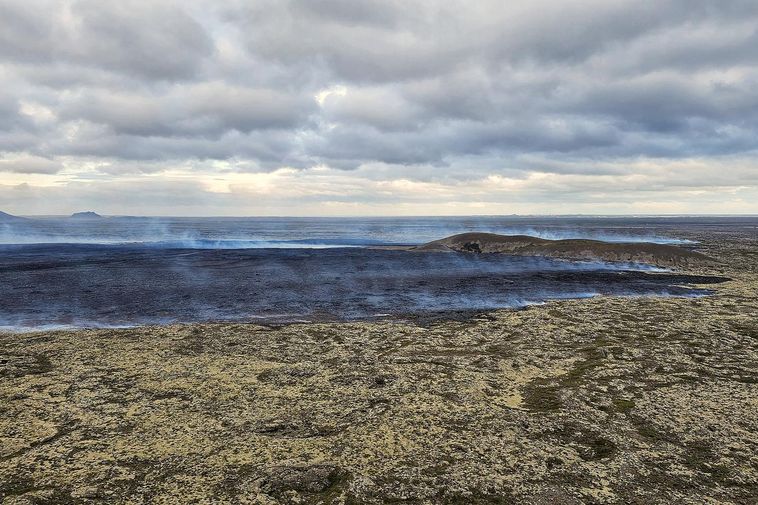The magma level under the Sundhnúkagígar crater row has never been higher, and it is expected that there will be very little warning before the next eruption. The last warning was only about half an hour.
mbl.is/Árni Sæberg
Scientists at the Icelandic Meteorological Office are closely monitoring for any warning signs of an impending eruption. While their instruments have yet to detect definitive signals, recent increases in seismic activity suggest growing pressure beneath the eruption sites.
However, earthquake activity at Sundhnúkagígar has been notably low today. Over the past 12 hours, only one minor earthquake has been recorded—a 1.3-magnitude tremor at 8:37 a.m., approximately one-kilometer northeast of Mt. Sundhnúkur.
Despite the relative calm, natural disaster expert Kristín Elísa Guðmundsdóttir warns against reading too much into short-term fluctuations.
“It’s difficult to interpret a trend based on just a few days,” she told mbl.is, adding that the Icelandic Meteorological Office has already confirmed increased seismic activity in recent days.
How will we know when an eruption is imminent?
Currently, almost 40 million cubic meters of magma are accumulating beneath the Sundhnúkagígar crater row—the highest volume since the eruption series began in December 2023.
When an eruption does begin, it is expected to come with little warning. “Last time, we had only about 30 minutes” notice,” Guðmundsdóttir explained.
What are the key warning signs?
The most reliable indicators of an impending eruption include:
Increased seismic activity in the magma tunnel
Pressure changes in HS Orka’s boreholes in Svartsengi, signaling magma movement underground
Currently, neither of these signs has been detected, meaning the situation remains stable—for now.
“Everything is quiet at the moment, but that can change very quickly,” Guðmundsdóttir cautioned.
Risk assessment remains unchanged
A statement from the Icelandic Meteorological Office, issued today, confirms that the risk assessment remains unchanged until March 18.
The most likely scenario remains a magma intrusion followed by an eruption, with the first activity expected between Mt. Sundhnúkur and Mt. Stóra-Skógfell.
The office also clarified that recent discrepancies in the mapping of seismic activity in the crater row have now been corrected, ensuring more accurate monitoring moving forward.
For live updates, you can follow the Sundhnúkagígar crater row live stream [
here
].

